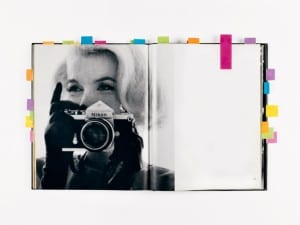A Dialogue Through Art: Works from The Jan Krugier Collection is a two-part auction, composed of works from the dealer’s renowned collection. Jan Krugier has represented many major artists, and later became the world’s foremost Pablo Picasso dealer. One of the pieces set for auction is a wooden African mask from the Ivory Coast and was of vital importance to Picasso. The mask was a source of much inspiration and it influenced two of his best known works, Les Demoiselles d’Avignon (1907) and Guernica (1937). We speak to Susan Kloman, Head of African and Oceanic Art at Christie’s, about the mask and African art.
A: The Baule mask is one of a number of African art pieces that form the expansive Jan Krugier Collection. What was it specifically about African art that fascinated and held so much sway with this icon of European art, Pablo Picasso?
SK: It’s difficult to imagine today the shock and power African art would have held for those who had never seen something so different – the African mask and its reconfiguration of the human face; African sculpture and its reduction of the nude to cubes and abstract planes. Picasso first saw African art in 1907 at the Musée Trocadéro, when he was trying to create something new in his own art. Les Demoiselles d’Avignon (1907) clearly and famously defined this association, which he then powerfully harnessed as a constant motif in nearly every aspect of his oeuvre.
A: In what different ways does the Baule mask find its way into Picasso’s work?
SK: The mask thereby represents a distillation of many leitmotifs upon which much of Picasso’s work revolved–the abstraction of African art itself, the mask and the bull. The mask is best of its type with a brilliant sense of line balancing its enormous form and volume. Picasso clearly admired this mask and one can see that he borrowed direct visual elements, like the open mouth and pointed tongue for paintings such as Guernica. The bull, we know, was often a self-referential metaphor. African art, as we know, profoundly changed Picasso’s work, and, subsequently the face of Modern art as we know it.
A: Did Picasso’s relationship with the mask change or develop at all throughout his career?
SK:Like the female form, the reconfiguration of the human face continually appears in new ways in his work throughout his career. We see it in Les Demoiselles d’Avignon and in his portraits of Marie-Thérèse Walter, for instance. For this mask, the story goes, he enjoyed keeping the mask on a rocking chair in his studio, so it was always “charging” and in motion. We can almost see the sort of movement and stretching and slicing of the face in one of his last great sculptures for Chicago’s Daley Plaza, Tête (Maquette pour la sculpture en plein air du Chicago Civic Center); of which Jan Krugier also owned and is offered in the auction.
A: What do we know about the origins and creation of this fundamentally significant mask?
SK:This mask, by the a carver of the Baule people of the Ivory Coast is called ‘goli glin’. It is the last in a processional masquerade called goli, whose characters intercede supernatural forces.
A: Does it appear to you that the maker of the Baule Mask and Picasso would have shared similar or very different ideas on the device and ethics of masking?
SK: The Baule carver was not carving for ‘art’s sake’; his task was sacred. He had a particular mission to create something aesthetically correct, within assigned parameters of the culture. Picasso was working against the social norms; and sought the profane.
A: How does this piece fit into or work with the Jan Krugier Collection as a whole?
SK: This mask created by a Baule mastercarver from Ivory Coast in the 19th century is a sort of axis upon which Jan Krugier’s sensibility pivoted – his feeling for beauty and sophistication and that he did not limit himself to a time, place or medium.
Credits
1. Baule Mask, Ivory Coast wood, h. 43 in. (109 cm.)





